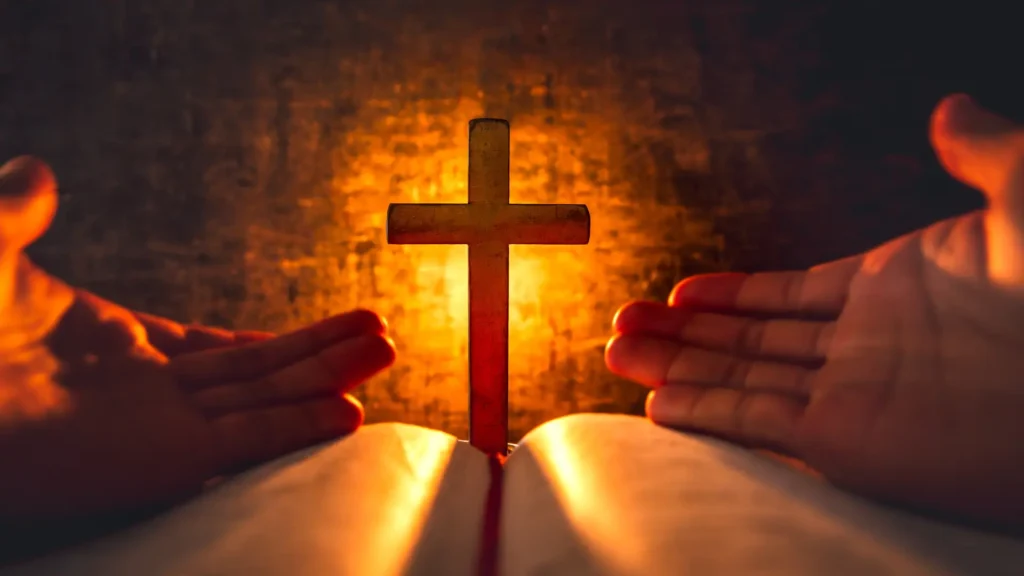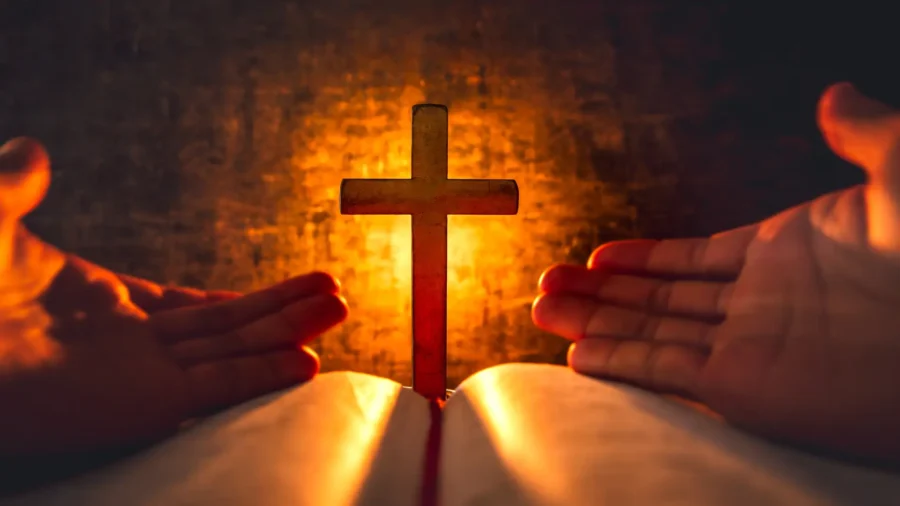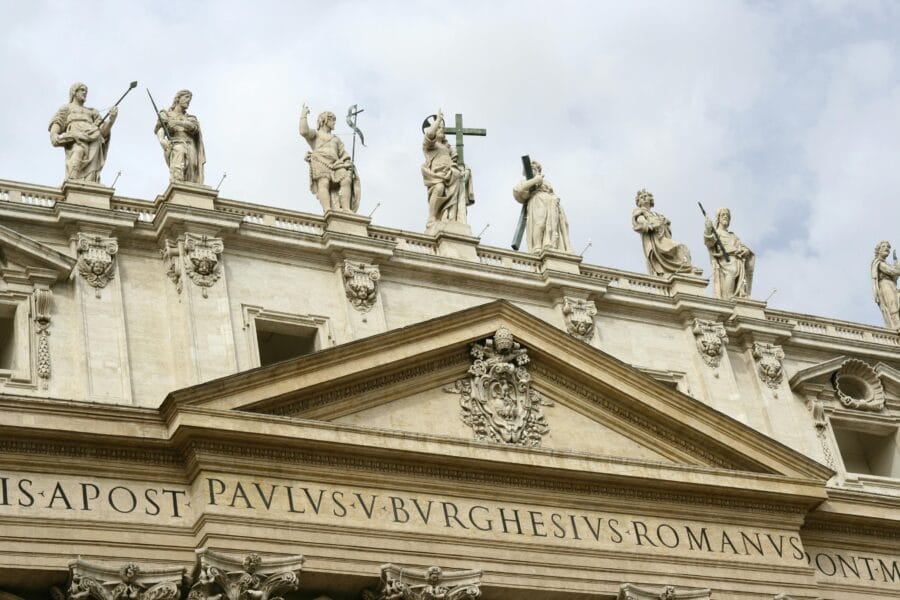Table of Contents
Short Answer: Catholic and Christian Difference
- Authority: Catholics recognize the Pope as the spiritual leader and authority, whereas other Christian denominations may not.
- Tradition and Scripture: Catholicism holds both the Bible and sacred Church traditions as authoritative, while many other Christian groups prioritize the Bible as the sole source of faith.
- Sacraments: Catholics observe seven sacraments, including the Eucharist, which is considered a re-presentation of Christ’s sacrifice. Other Christian denominations may recognize fewer sacraments and have different views on their significance.
- Views on Mary and the Saints: Catholics have a strong devotion to Mary and the saints, viewing Mary as free from original sin and an intercessor for believers. Other Christian denominations respect Mary but generally do not accord her the same level of veneration.
A Catholic is Christian but a Christian is not always Catholic
Of the roughly 2.5 billion Christians worldwide, about 1.4 billion identify as Catholics, making Catholicism the largest single denomination within Christianity. Originating from the early teachings of Christianity, Catholicism is a major branch that encompasses a unique set of beliefs, practices, and traditions, affirming that while all Catholics are Christians, not all Christians are Catholics due to the rich diversity of the faith.
To analyze the division we will go back in time and find the split, analyze it’s cause and follow along the branching and changing path of Christianity.
Exploring the Origins of Christianity: The Earliest Historical Records Before Denominational Splits
The roots of Christianity stretch back to the 1st century AD, primarily centered in the Middle East, within the Roman Empire. The earliest followers of Christianity were Jews who believed that Jesus of Nazareth was the promised Messiah, as described in Jewish prophecies. These initial Christians, including figures like Peter, Paul, and other apostles, began spreading the teachings of Jesus, emphasizing concepts such as love, redemption, and the kingdom of God. This period, before any formal splits, was characterized by a relatively homogeneous belief system based on the teachings and life of Jesus, as recorded in the New Testament. The movement grew organically around the Mediterranean, attracting both Jewish and Gentile converts despite facing sporadic persecution from Roman authorities. The doctrinal unity of this early phase gradually began to fray as Christianity spread geographically and encountered diverse cultures, leading to the development of various interpretations and practices that eventually necessitated formal organization.
The Great Schism: Differences Between the Eastern Orthodox Church and the Roman Catholic Church
The differences between the Eastern Orthodox Church and the Roman Catholic Church that emerged during and after the Great Schism of 1054 AD spanned several doctrinal, liturgical, and cultural areas. These differences evolved over the centuries, reflecting deeper theological, linguistic, and geopolitical divisions. Here are some key areas where their beliefs and practices diverged:
Authority and Church Governance
A central issue was the authority of the Pope. The Roman Catholic Church maintained that the Pope, as the successor to Saint Peter, held supreme authority over the Church, including the power to make definitive decisions in matters of faith and practice. Conversely, the Eastern Orthodox Church operated with a model of conciliarity, where no single church leader had supreme authority. Decisions were made collectively by the bishops in council, and the Patriarch of Constantinople was considered “first among equals,” without the extensive powers attributed to the Pope.
The Filioque Controversy
One of the most significant theological disputes was over the addition of the Latin word filioque (“and the Son”) to the Nicene Creed by the Western Church. This phrase indicated that the Holy Spirit proceeded from both the Father and the Son. The Eastern Church objected, maintaining the original creed that stated the Holy Spirit proceeded from the Father alone, arguing that the unilateral addition by the West without an ecumenical council was both unauthorized and doctrinally incorrect.
Liturgical Differences
The two branches also diverged in liturgical practices. The Roman Catholic Church used Latin as its liturgical language, while the Eastern Orthodox churches used local languages such as Greek, Church Slavonic, and later, national languages. There were also differences in liturgical calendars, feast days, and the specific rites and ceremonies performed during services.
Iconoclasm
The use of icons was another point of contention. While both churches venerated icons, the role and theology behind them were subjects of dispute during the Iconoclast Controversies in the 8th and 9th centuries. The Eastern Church strongly emphasized the veneration of icons, considering them a means of accessing the divine and affirming the incarnation of Christ. The Western Church, though also utilizing icons, sometimes viewed the Eastern practices as excessive, leading to accusations of idolatry.
Clerical Celibacy
The Roman Catholic Church enforced clerical celibacy, requiring that priests remain unmarried. In contrast, the Eastern Orthodox Church allowed priests to marry before ordination, although bishops were typically selected from the ranks of the celibate clergy.
Views on Original Sin and the Immaculate Conception
The theology surrounding original sin and its consequences also varied. In the West, the doctrine of the Immaculate Conception emerged, which stated that Mary was conceived without original sin. The Eastern Church did not accept this doctrine, emphasizing instead that Mary chose a sinless life by her free will.
Following the Great Schism of 1054 AD, the next significant moment in the history of Christianity that led to further doctrinal and organizational division was the Protestant Reformation, which began in the early 16th century. This movement marks one of the most critical turning points in Christian history, fundamentally changing the structure of the Church and introducing a new array of denominations.
The Protestant Reformation (1517 AD)
Origins and Catalyst:
The Protestant Reformation officially started in 1517 when Martin Luther, a German monk and theology professor, posted his “95 Theses” on the door of the Castle Church in Wittenberg, Germany. His theses criticized various practices of the Roman Catholic Church, particularly the sale of indulgences, which were payments made to the Church in exchange for the reduction of punishment for sins.
Key Differences and Doctrines
- Sola Scriptura (Scripture Alone): The principle that the Bible alone is the supreme authority in matters of faith and practice, surpassing Church traditions and papal authority.
- Justification by Faith: Emphasizes that salvation is through faith alone (“Sola Fide”), not through good works, challenging the Catholic view that combines faith and works for salvation.
- Priesthood of All Believers: Promotes the idea that all baptized Christians are part of the priesthood, contrasting with the Catholic hierarchical structure of clergy.
- Rejection of Certain Sacraments: Most Protestant denominations recognize only baptism and the Lord’s Supper as true sacraments, unlike the seven sacraments upheld by the Catholic Church.
Spread and Impact
The Reformation’s ideas spread rapidly across Europe, facilitated by the printing press. This led to the establishment of various Protestant churches, each with its own doctrines and practices.
Political and Social Ramifications
The Reformation led to wars of religion, changes in governance, and had a profound impact on education and culture in Europe.
Counter-Reformation
In response to the Reformation, the Catholic Church initiated the Counter-Reformation, marked by the Council of Trent, which aimed to clarify and reaffirm Catholic doctrines and strengthen papal authority.
The Protestant Reformation significantly reshaped Christianity, introducing a diversity of Christian expressions and setting the stage for the modern pluralistic Christian world.
Historical Context: Christianity from Enlightenment to Modernism
Following the Protestant Reformation and the Counter-Reformation, the next pivotal era in the history of Christianity was the Age of Enlightenment, extending through the rise of Modernism, from the 17th to the 19th centuries. This period deeply influenced Christian thought and practice amidst changing intellectual and cultural landscapes in Europe and America.
The Age of Enlightenment (Late 17th to 18th Century)
Characteristics and Influence:
- Focus on Reason: Known as the Age of Reason, this era emphasized rationalism, individualism, and a scrutiny of traditional institutions and beliefs.
- Rational Christianity and Deism: Intellectuals sought to align Christianity with the era’s scientific discoveries, leading to Deism, which views God as a remote creator who does not intervene directly in the universe.
- Critiques and Secularization: Prominent thinkers like Voltaire and Kant advocated for religious tolerance and separation of church and state, challenging the church’s authority and roles.
The Rise of Modernism (19th to Early 20th Century)
Adaptations and Challenges:
- Liberal Theology: Facing modern critiques and scientific progress, some theologians developed Liberal Christianity, which reinterpreted doctrines to reflect contemporary values and knowledge.
- Fundamentalism: As a reaction to Liberal Christianity, the Fundamentalist movement in the U.S. reaffirmed a literal interpretation of the Bible and the inerrancy of scripture.
Global Missions and Expansion
During this period, Christianity expanded globally through missionary work, significantly impacting cultures and establishing Christian communities worldwide.
Ecumenical Movement
The early 20th century saw the emergence of the Ecumenical movement, culminating in the formation of the World Council of Churches in 1948, promoting unity and cooperative efforts among Christian denominations.
The enlightenment and subsequent rise of Modernism introduced both challenges and opportunities for Christianity, leading to significant doctrinal diversification and a global expansion that continues to shape the religion’s dynamics today.
Conclusion
In the present day, Christianity continues to evolve across the globe, reflecting shifts in demographics, technology, and societal values. The movement of Christianity’s center of gravity to the Global South, the integration of digital technologies in worship, and an increasing engagement with social and environmental issues mark some of the transformative trends. These changes occur alongside the continuing diversification of theological perspectives and a resurgence in conservative Christianity in certain regions.
These developments exemplify the dynamic nature of Christianity today and reinforce the differences outlined earlier between Catholicism and other Christian denominations: the unique role of the Pope, the balance between tradition and scripture, the number and nature of sacraments, and views on figures such as Mary and the saints. Each of these elements continues to define and distinguish the myriad forms of Christian practice and belief in the modern world.






